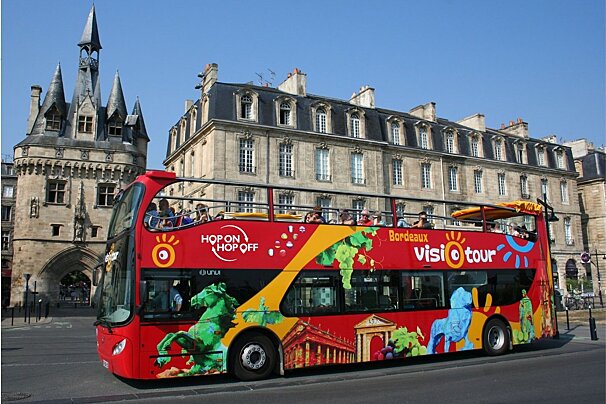
Bordeaux City Tour
Take in Bordeaux’s historic landmarks and modern highlights on a hop-on hop-off double-decker bus tour with panoramic views and audio commentary for all ages.

© Cabanes de la Romaningue

© Cabanes de la Romaningue

© Cabanes de la Romaningue

© Cabanes de la Romaningue
A unique place to stay in a vineyard dating back to the 16th century
You can either stay in one of the comfortable tree-houses in the forest canapé 9 metres off the ground. Or one of the cosy bubbles which in a unique modern form of logging in your own little private clearing in the woods.
5 different individual tree-houses accommodating 2 to 6 people 9 metres of the forest floor. A instructor will demonstrate how to access the tree-house and winch up luggage.
There are also 3 bubble loggings. These unique bubbles connect to provide different living areas, all on a terrace in your own private clearing in the woods. Solar panels provide you power.
Finally there is a Romanee Caravan built in a centuries old tradition it has been modernized to include modern comforts.
A breakfast basket is included with your stay and will be placed on your terrace or on the winch for you to pull up to your tree-house. Dinner baskets can be provided at an extra charge. On arrival you will be provided with a backpack which includes a small bottle of wine, binoculars, LED lamp, dynamo lamps a headlamp and candles.

Take in Bordeaux’s historic landmarks and modern highlights on a hop-on hop-off double-decker bus tour with panoramic views and audio commentary for all ages.

With a varied and interesting mix of wildlife, you can learn about the animals, conservation and about the zoo's research projects, whilst walking amidst the enclosures.

With over 1000 animals to meet, from around 75 different species, from the very smallest, all the way up to the largest breeding camels in France.

Created in 1989, the Golf du Médoc offers 2 remarkable 18-hole courses: Les Châteaux and Les Vignes.

As it passes through the oldest parts of Bordeaux, making the most of the landscape, the train takes you past the most famous places and monuments of the city.

Designed as a public green space in the 19th-century, this 28-hectare historical park is home to around 3000 trees, 1000 of which are more than a century old.

Situated in the luxurious surroundings of Le Grand Hotel de Bordeaux, this restaurant offers diners an elegant yet intimate restaurant styled in a palette of mauve and orange with a handcrafted marquetry floor.

Situated in a gorgeous white stone townhouse built in the classical style of the late 19th century, this restaurant is part of the joint project of Bernard Magrez, owner of various wineries in the Bordeaux area, and Pierre Gagnaire.
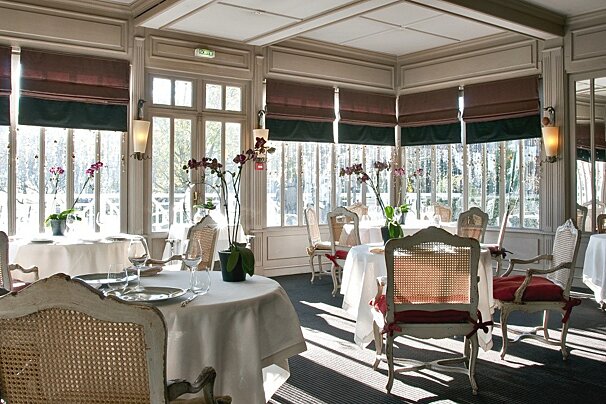
Chef Nicolas Masse offers in this restaurant a combination of traditional French cuisine, made with fresh seasonal ingredients from the southwest sourced from local producers, with unusual influences from all around the world. His creations can be paired with a large selection of wines, by the counsel of head sommelier Aurélien Farouil.

This restaurant adjusts its menu according to the products available in the season, using fresh ingredients for tasty dishes. It serves a classic French cuisine with some internationally inspired touches.

This restaurant is located in an old wine warehouse or "chai", and its dining room is dominated by a beautiful stone arched ceiling. They serve themed plates which combine every course into one serving, using regional ingredients for their take on French cuisine.

This restaurant serves inventive dishes based on local, organic and fresh products which change weekly. They have a large selection of vegetarian choices, and its daily set menu includes three options: fish, meat and vegan.
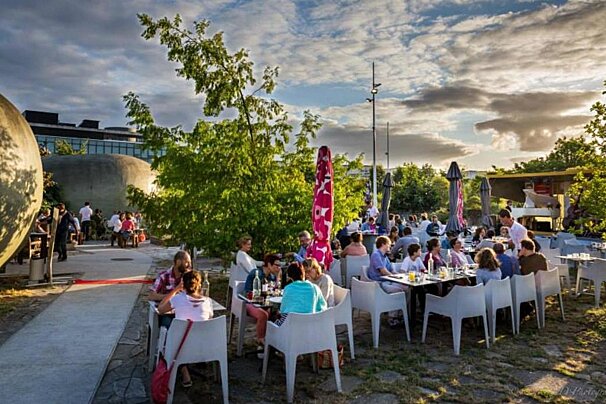
A diverse music programming that showcases some of the best local and national talent in jazz, music of the World, blues and many other expressions.

Situated at the foot of the historical Porte Cailhau, this bar has a list of more than 100 wines. They are focused on international products as well as some lesser-known wines from Bordeaux.

This bar has an old-fashioned decoration that creates a very warm atmosphere. Their wine list includes many French references, as well as from other parts of the world. They can be enjoyed in their cosy interior or the patio, accompanied by selections of local delicatessen.

Centrally located, this bar offers a large selection of wines, especially French but also from other parts of the world. Customers can taste them through a self-service method, and they can be accompanied by regional delicatessen.

One of the best places to taste wines from the Bordeaux region. Located on the ground floor of the headquarters of the Conseil Interprofessionel du Vin de Bordeaux, the bar's team is very knowledgeable and passionate. They give tasting advice, extensive information on the grapes and suggestions for matching food and wine.
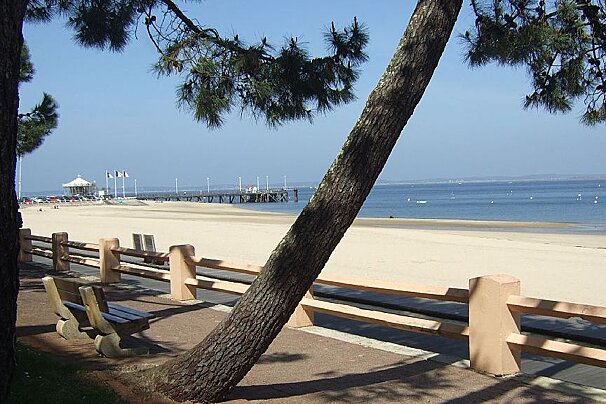
A small, peaceful and tranquil beach that is situated at the entrance to the marina and is the most sheltered of all the beaches around Arcachon due to its location within the basin.
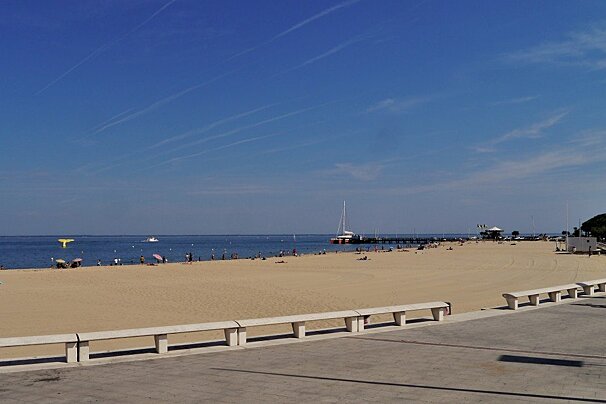
An 800m strip of white sand situated between the Theirs and Eyrac piers this beach is very much in the Arcachon basin and sheltered from the strong Altlantic winds on the coast.
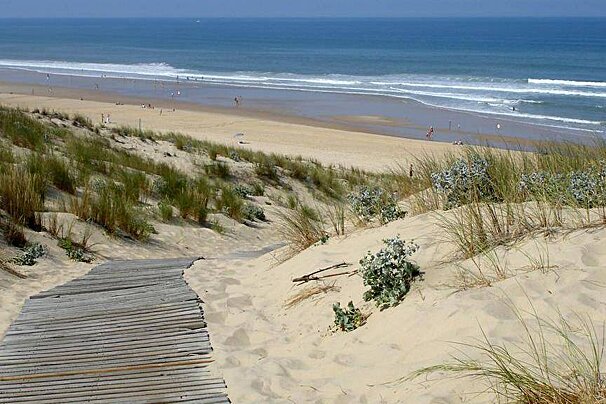
Le Porge beach is also known for its large waves and strong undertow, even if the rescuers are not far away, you must remain cautious as you would for many of the ocean beaches.
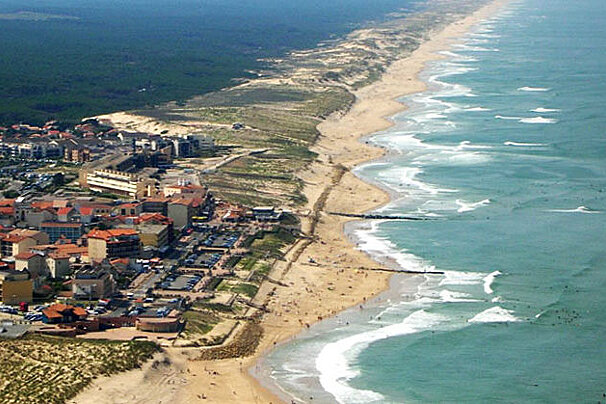
Over time, the wind and ocean currents have gradually created a wall of sand dunes, behind which streams and rivers have allowed the formation of lakes and freshwater ponds.
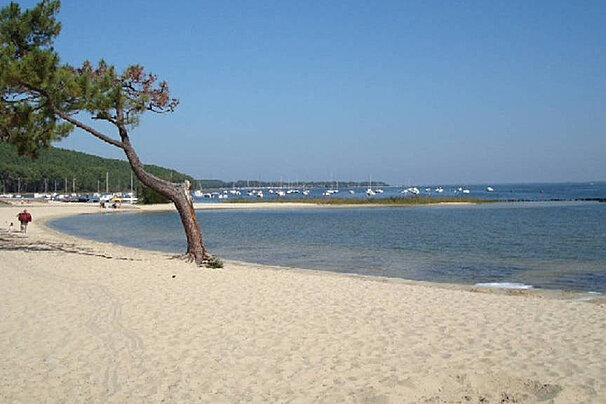
A protected natural reserve with wild marshes, sand dunes and pine forests, this huge body of water is perfect for outdoor activities such as sailing, swimming, water skiing, windsurfing, canoeing, fishing, kite surfing, paddle boarding, or walking and biking along the trails and cycle paths that line the shores of the lake.

Beach Grand Crohot Lege is accessible by walkways throughout the year, and is supervised by lifeguards from mid June to mid September.

The Cité du Vin whose doors opened on 1st June 2016, is an iconic architectural feature situated on the river. it offers a sensory and artistic journey allowing visitors to become familiar with the civilizations of the world of wine.
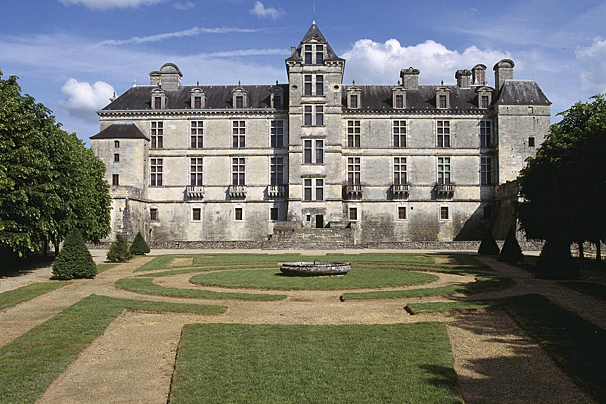
Built for the Duke of Epernon in the 16th century, this lavish château contained over 50 bedrooms!
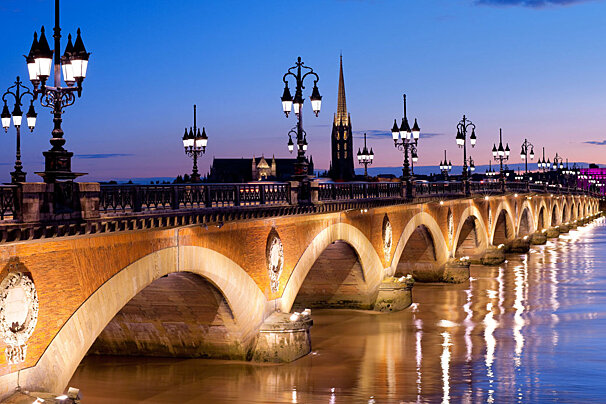
Crossing the Garonne river, the Pont de Pierre or "stone bridge" was the first to span this expanse of river in Bordeaux.

The existing Roman Catholic church was built in the late 11th and early 12th century in a Romanesque style. However, it is thought that the original Benedictine church was built at the request of Clovis, the Merovingian King in the 5th century.

Imposing on the Place Canteloupe in Bordeaux, this Gothic church took over 200 years to construct from the 14th to the 16th century.
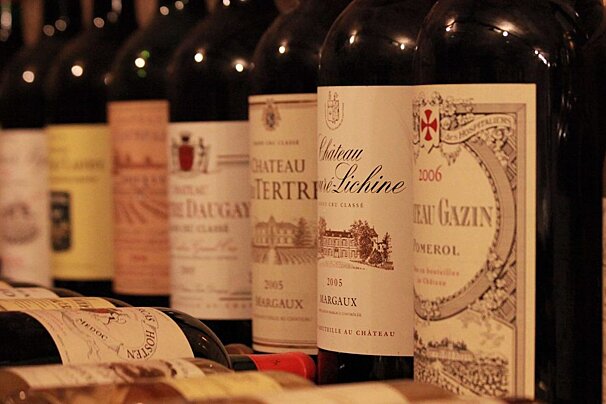
Museum located in an elegant and prestigious building, built around 1720 for the Irish merchant Francis Burke. Consisting of two parts, the first residential with several apartments and a façade adorned with a beautiful balcony, and the second and technical part where wines were matured and worked.
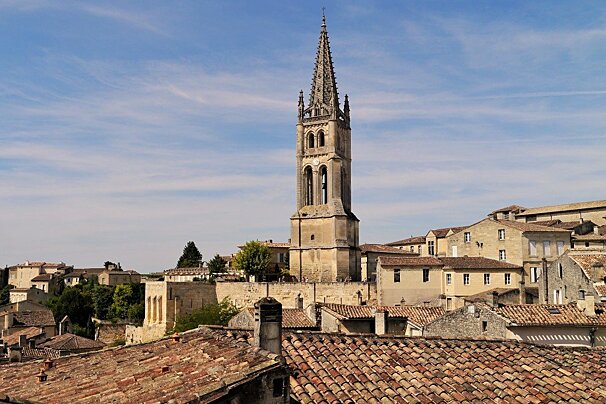
Vineyards were planted around this old town in Roman times and whilst most people associate the name with the wine, the town itself is worth a visit for its ramparted old centre with interesting Romanesque churches and an incredible underground monolithic church.

The small village of Margaux, just north of Bordeaux, is most famously associated with the wine châteaux which produce the excellent Margaux appellation Médoc wines.

You get a sense of this town's history as soon as you arrive, with are flags and coats of arms lining the roads that lead you to the main square.
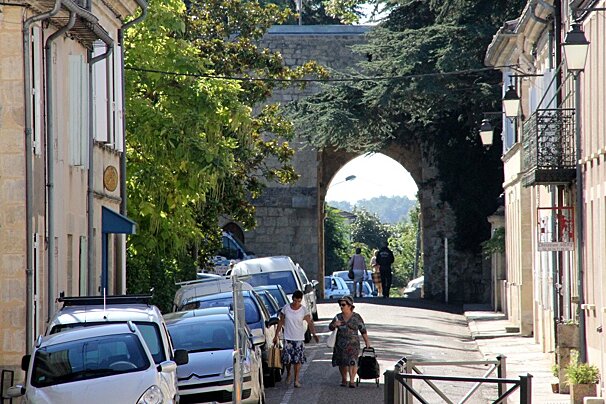
It has the typical square layout around a central market square that is common with towns of that time and they still hold a market there on Tuesday mornings. It's a good example of a bastide town; these towns were established mainly as commercial centres, encouraged by incentives set down in a charter.

The town of Blaye is situated on the right bank of the Gironde estuary. Its major historical feature is its fortified citadel, which along with Fort Médoc and Fort Paté make up a trio of fortresses designed to defend Bordeaux against a river attack.
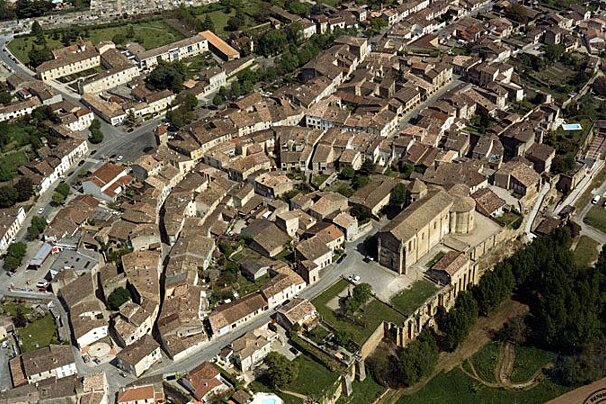
The pretty town of Saint-Macaire is a good base for seeing the area around Langon. It dates back to the 1st century AD and grew as a battlement town in the first half of the last millennium.